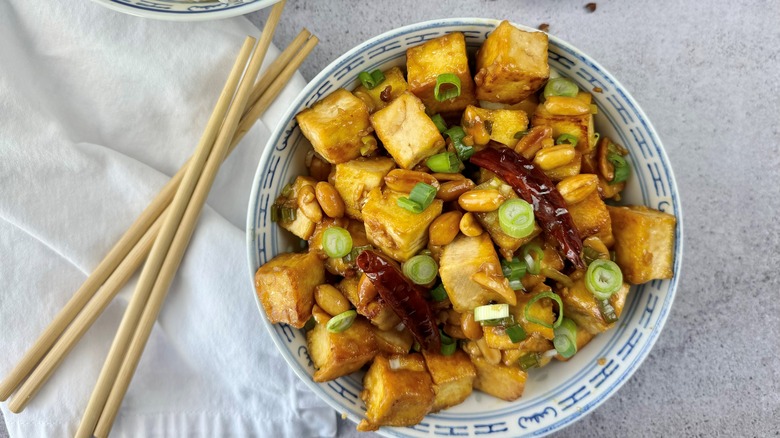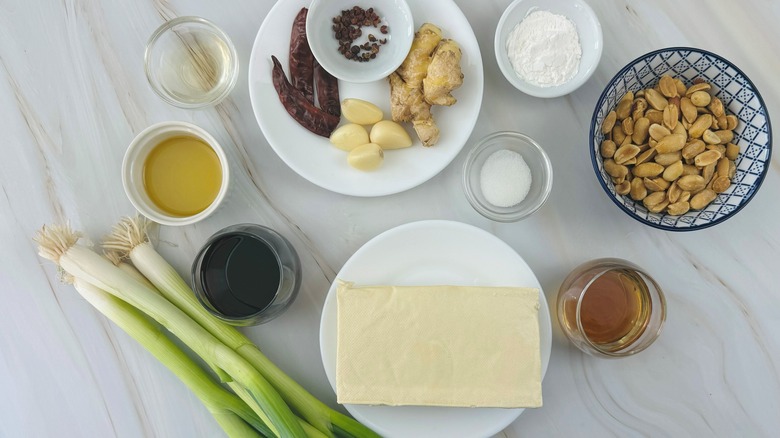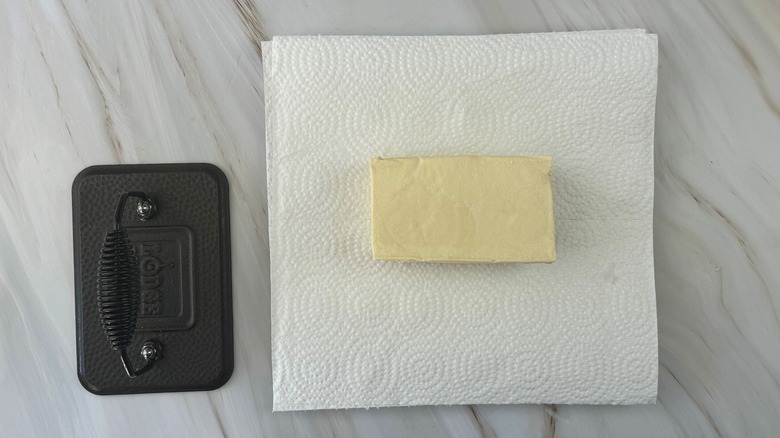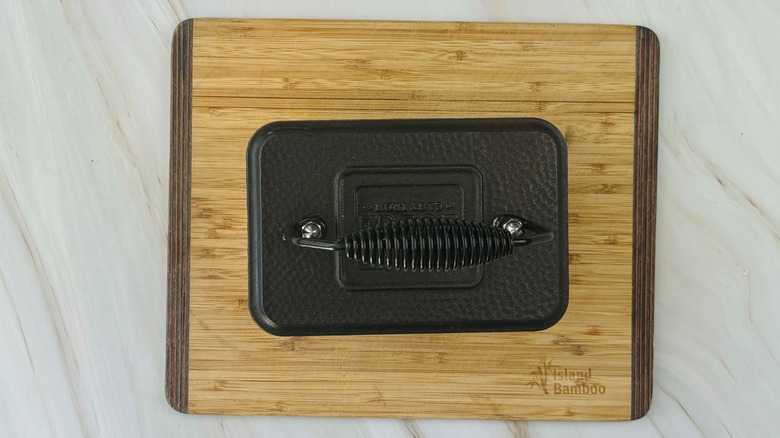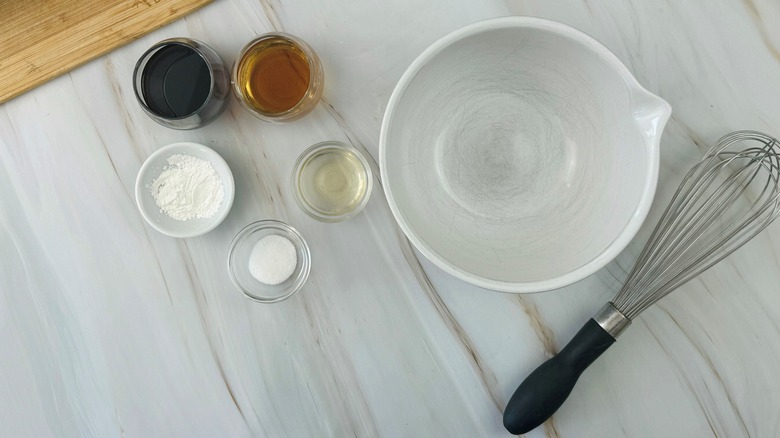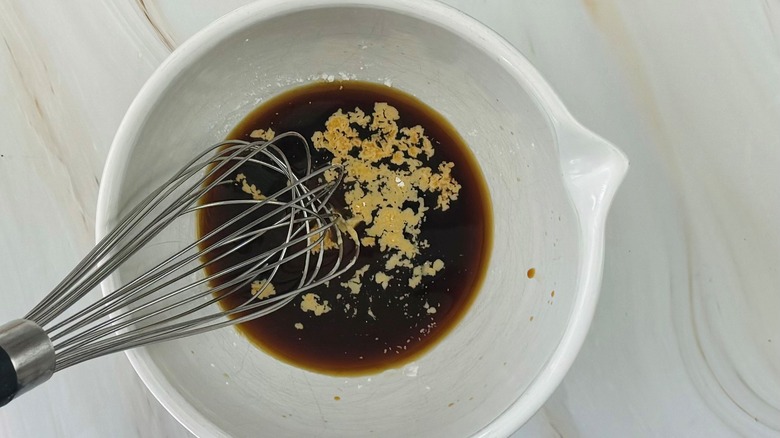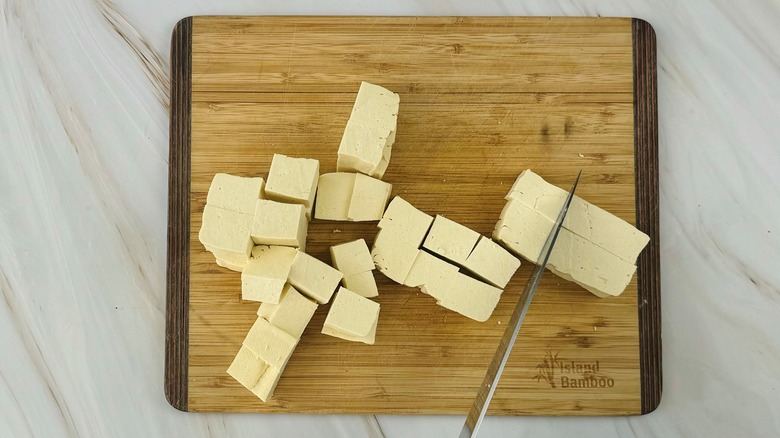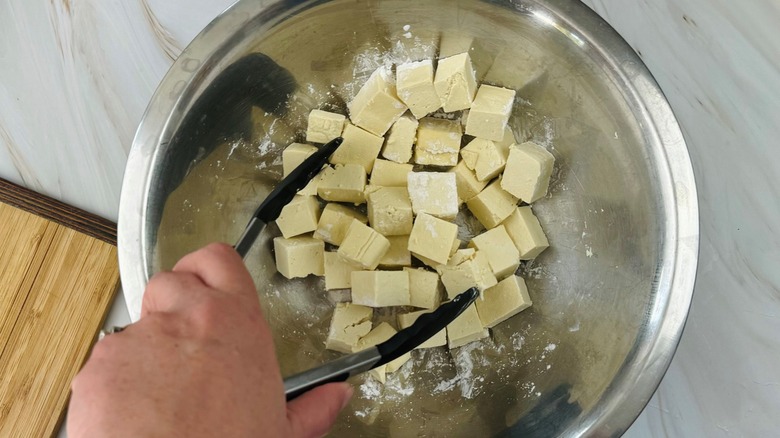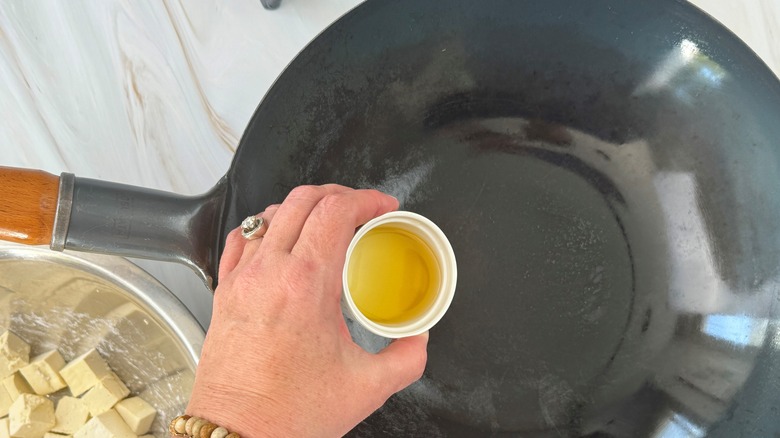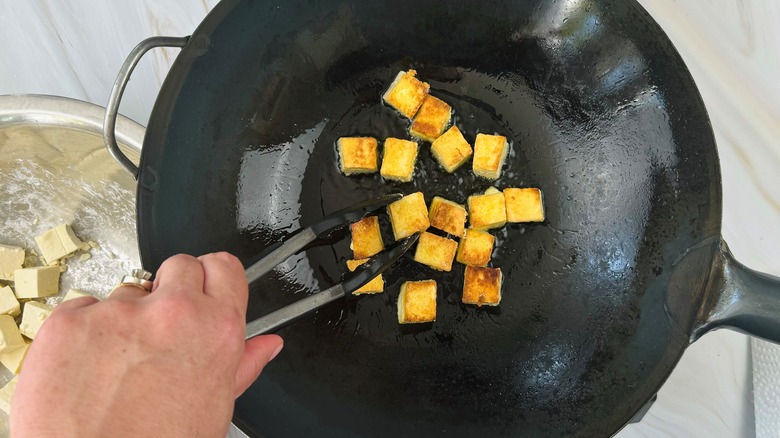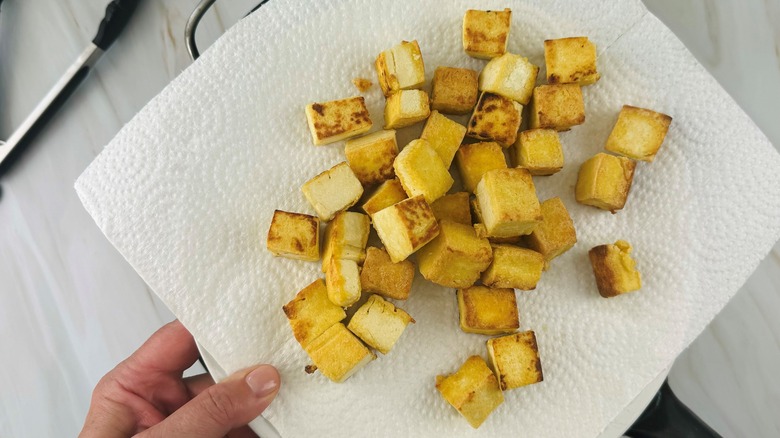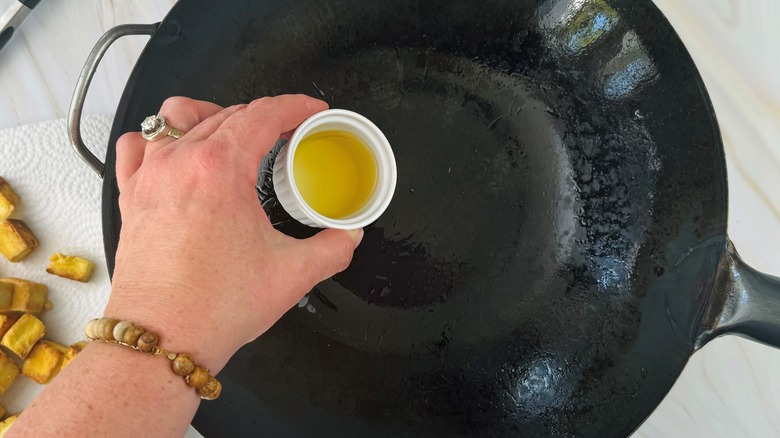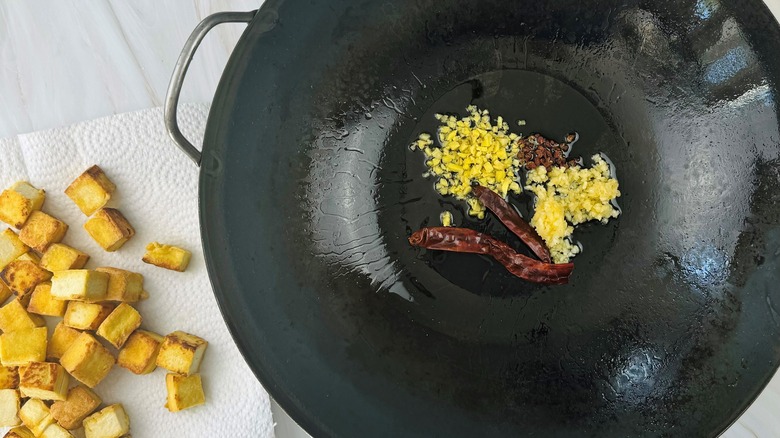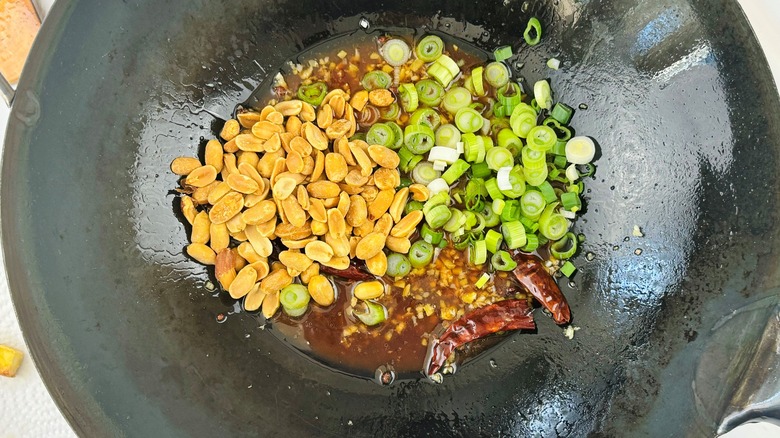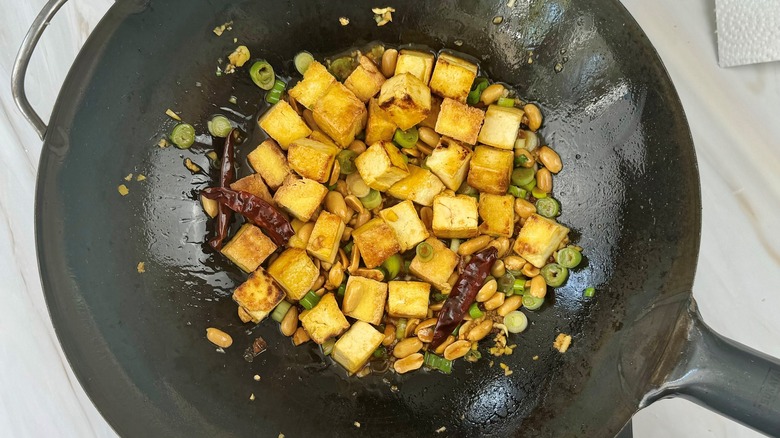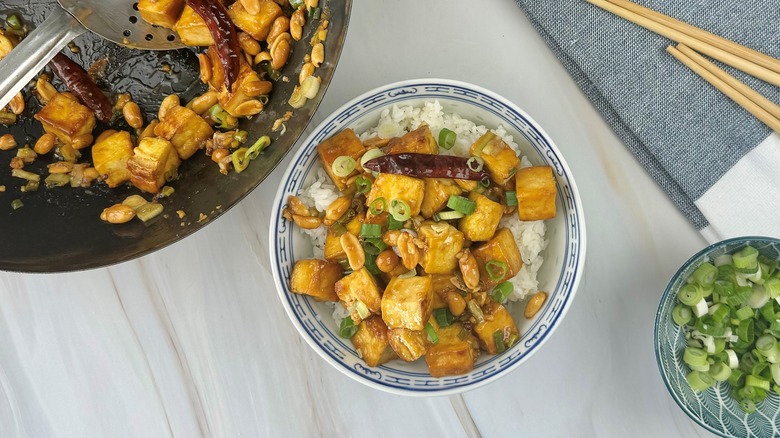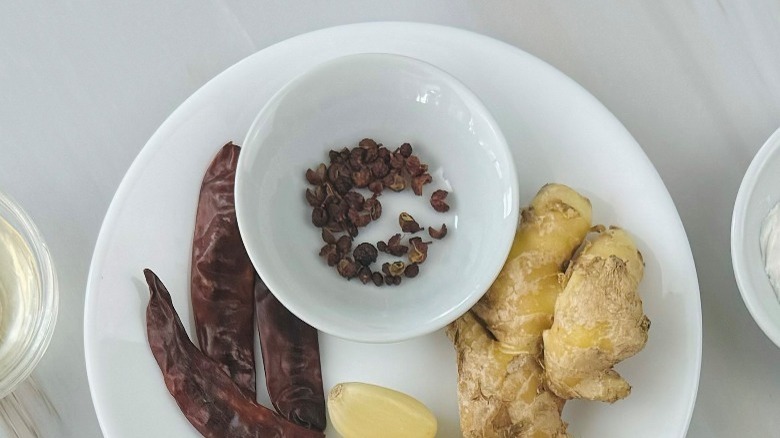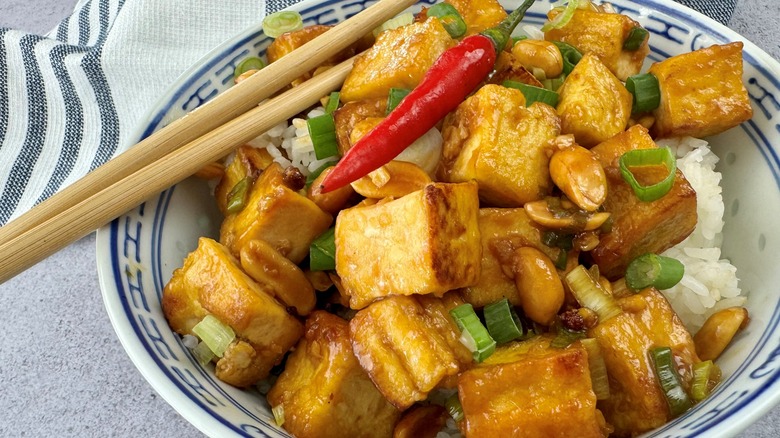Classic Kung Pao Tofu Recipe
Kung pao chicken, a stir-fried dish in a tangy-sweet sauce with a serious kick from chiles and Sichuan peppercorns, has an origin story that dates back to the 19th century. While the original kung pao dish is made with chicken, this enduring Chinese takeout favorite has spawned numerous knockoffs over the years including kung pao shrimp, kung pao scallops, and meat-free versions like kung pao cauliflower and kung pao tofu. As recipe developer Julianne De Witt says of her take on kung pao tofu, "It's a flavorful, easy recipe that makes a perfect weeknight meal." Serve it with rice as she does here, or try it with noodles or even rolled into lettuce to make low-carb wraps. This is a great dish for solo diners, too, since it lasts for up to 4 days in the refrigerator.
De Witt's recipe pairs wonderfully crispy tofu with a sauce that is perfectly balanced between tart, sweet, and spicy. She tells us she likes to press the tofu with a sandwich press or cast iron pan before cooking to squeeze out the moisture. "This combined with the cornstarch coating will yield a crispier tofu, but if you're pressed for time the tofu can just be dried quickly with a paper towel before slicing."
Collect the ingredients for this classic kung pao tofu
This stir-fry is made from tofu, scallions, chiles, and peanuts, with extra flavoring from soy sauce, rice vinegar, garlic, ginger, Sichuan peppercorns, sugar, and Shaoxing wine. De Witt explains, "Shaoxing wine is a flavorful Chinese cooking wine made from fermented rice. It adds depth and complexity and is a staple in Chinese kitchens. If you can't get your hands on it, dry cooking sherry makes a good substitute." You'll also need cornstarch and cooking oil (De Witt uses avocado for preference), plus some cooked rice to eat with it.
Step 1: Prepare the tofu
Wrap the tofu in a paper towel and place it on a cutting board.
Step 2: Press the tofu
Place a heavy sandwich press or pan on top of the tofu for 30 minutes to draw out any extra moisture.
Step 3: Combine the sauce ingredients
While the tofu is resting, prepare the sauce by adding soy sauce, wine, vinegar, 2 teaspoons cornstarch, and sugar to a small bowl.
Step 4: Stir the sauce ingredients
Whisk and set aside.
Step 5: Chop the tofu
Cut the tofu into 1-inch cubes.
Step 6: Mix the tofu with cornstarch
Transfer the tofu to a large bowl and toss to coat it with the remaining tablespoon of cornstarch.
Step 7: Warm the oil
Heat 2 tablespoons of oil in a wok over medium-high heat.
Step 8: Cook the tofu
Working in two batches, brown the tofu on each side, approximately 6 minutes per batch.
Step 9: Drain the tofu
Remove the tofu from the pan and place it on a paper towel.
Step 10: Pour the rest of the oil into the pan
Add the remaining 2 tablespoons of oil to the wok.
Step 11: Fry the seasonings
Add the garlic, ginger, peppercorns, and chiles to the wok. Stir and cook for 1 minute, until fragrant.
Step 12: Stir in the sauce, scallions, and peanuts
Add the sauce, peanuts, and scallions and stir to combine.
Step 13: Heat the tofu in the sauce
Add the tofu and stir fry for 2 minutes.
Step 14: Serve the tofu with rice
Serve the kung pao tofu with steamed rice.
What are Sichuan peppercorns and what can I substitute for them?
Sichuan peppercorns, an essential component in Sichuan cooking, aren't actually true peppercorns. Instead, they are the fragrant outer husks of berries that grow on a type of citrus tree called the prickly ash. This citrus connection may go partway towards explaining what De Witt describes as the "earthy, citrusy, mouth-numbing, and spicy" flavor of Sichuan peppercorns. She warns, however, that a little goes a long way, so you may want to take it slowly when increasing the amount of this particular spice even if you typically take a "more is better" approach to seasoning your stir-fries.
If you don't have any Sichuan peppercorns on hand, De Witt recommends that you combine cracked black peppercorns with cumin seeds, although she does say that this spice blend won't have the same mouth-numbing (or "palate-vibrating") effect that the peppercorns do. Yet another alternative is to use ground black pepper combined with coriander seeds for a less earthy, more floral approximation of the spice.
What type of chiles should I use in this kung pao recipe?
The chiles that De Witt likes to use in her classic kung pao tofu are dried Chinese chiles, which are small red chilies that are also often labeled as chiles Japones, Tien Tsin, or Tianjin chiles. These typically have between 40,000 and 70,000 Scoville units, which makes them about as hot as tabasco peppers or cayenne peppers. The chiles are often added to a dish whole, but De Witt tells us that for a spicier dish, you can chop the chiles before adding them.
If you would like to use fresh peppers you can use Thai chiles, which tend to be slightly spicier as they have 50,000 to 100,000 Scoville units. For a milder dish, you can use serrano peppers (5,000 to 1,500) or even jalapeños (2,500 to 5,000). You could also use crushed red pepper flakes or ground cayenne pepper in place of the chiles Japones if that's what you happen to have on hand. Of course, you can always adjust the amount of chiles, depending on how hot you like your food.
Classic Kung Pao Tofu Recipe
Kung pao tofu, in a tangy-sweet sauce with a serious kick from chiles and Sichuan peppercorns, is a flavorful, easy recipe that makes a perfect weeknight meal.
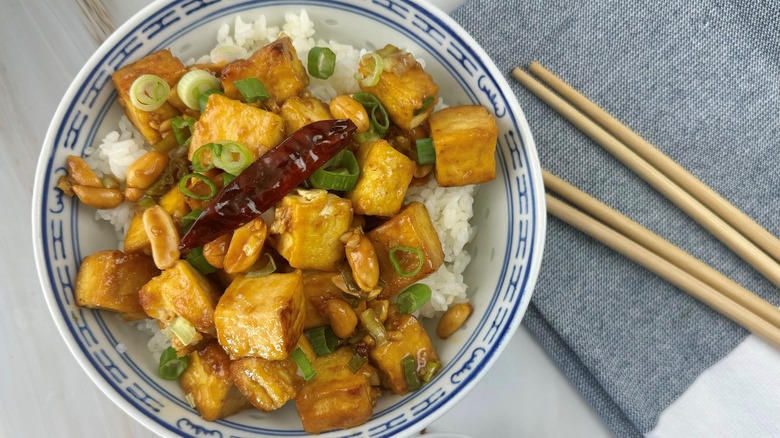
Ingredients
- 1 (12-ounce) block extra firm tofu
- 3 tablespoons soy sauce
- 2 tablespoons Shaoxing wine
- 1 tablespoon rice vinegar
- 1 tablespoon plus 2 teaspoons cornstarch, divided
- 1 teaspoon sugar
- 4 tablespoons avocado oil, divided
- 4 cloves minced garlic
- 1 tablespoon minced ginger
- 1 teaspoon Sichuan peppercorns
- 4 dried whole Chinese chiles
- ½ cup dry roasted peanuts
- 5 scallions, diced
Optional Ingredients
- Steamed white rice, for serving
Directions
- Wrap the tofu in a paper towel and place it on a cutting board.
- Place a heavy sandwich press or pan on top of the tofu for 30 minutes to draw out any extra moisture.
- While the tofu is resting, prepare the sauce by adding soy sauce, wine, vinegar, 2 teaspoons cornstarch, and sugar to a small bowl.
- Whisk and set aside.
- Cut the tofu into 1-inch cubes.
- Transfer the tofu to a large bowl and toss to coat it with the remaining tablespoon of cornstarch.
- Heat 2 tablespoons of oil in a wok over medium-high heat.
- Working in two batches, brown the tofu on each side, approximately 6 minutes per batch.
- Remove the tofu from the pan and place it on a paper towel.
- Add the remaining 2 tablespoons of oil to the wok.
- Add the garlic, ginger, peppercorns, and chiles to the wok. Stir and cook for 1 minute, until fragrant.
- Add the sauce, peanuts, and scallions and stir to combine.
- Add the tofu and stir fry for 2 minutes.
- Serve the kung pao tofu with steamed rice, if desired.
Nutrition
| Calories per Serving | 821 |
| Total Fat | 61.5 g |
| Saturated Fat | 7.8 g |
| Trans Fat | 0.0 g |
| Cholesterol | 0.0 mg |
| Total Carbohydrates | 34.3 g |
| Dietary Fiber | 10.1 g |
| Total Sugars | 9.7 g |
| Sodium | 1,364.8 mg |
| Protein | 43.7 g |
